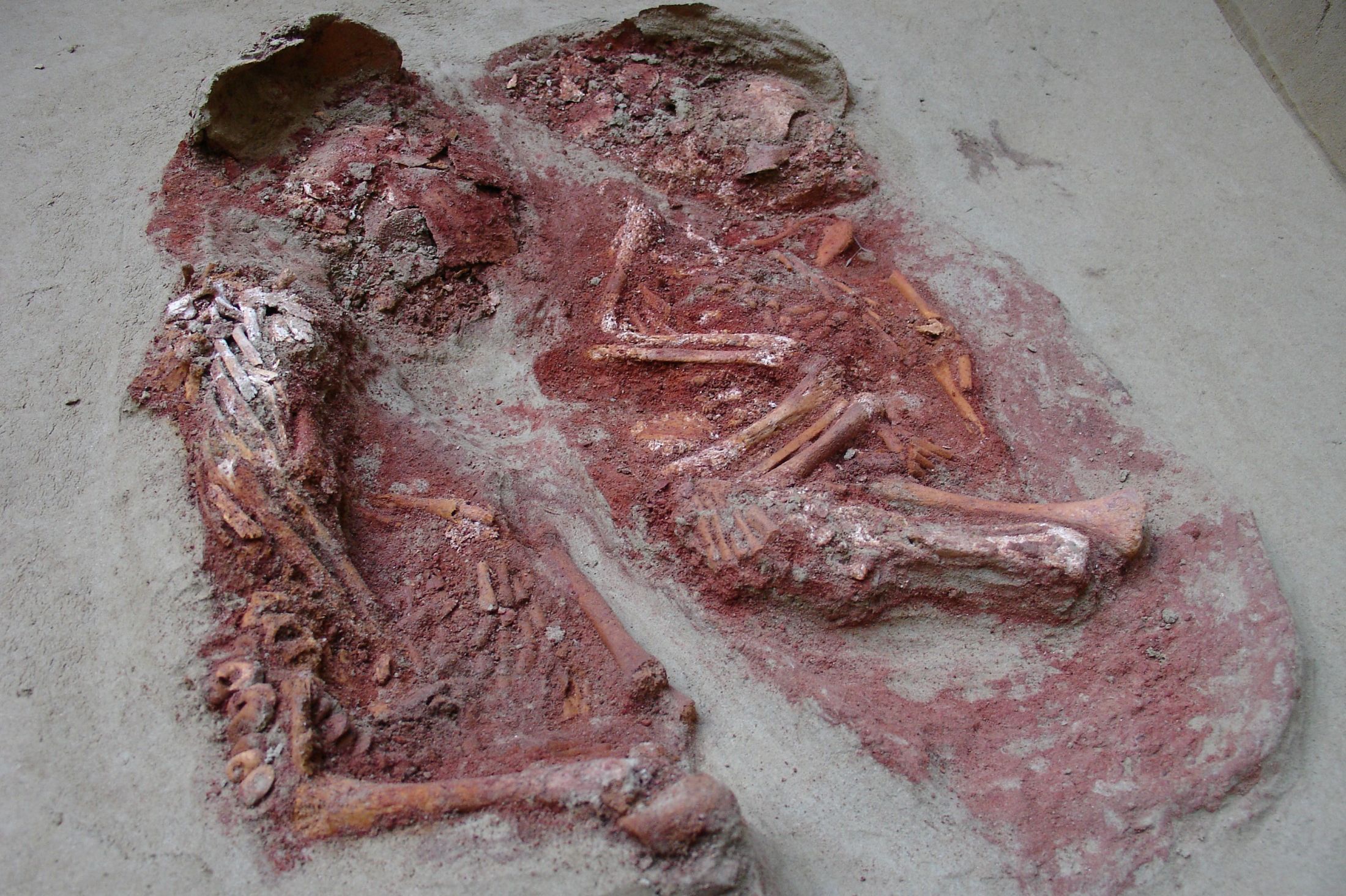
(Vienna, 11 November 2020) In 2005, a double burial of two newborns dating from approx. 31,000 years ago was found at Krems in Lower Austria, together with a separate grave of a three-month-old infant. MedUni Vienna was represented on the 16-strong interdisciplinary team, which carried out genetic, morphological and chemical tests in order to decipher the degree of kinship of the three infants and to determine their gender and age at death more accurately.
Two Upper Palaeolithic infant burials – one double burial of two newborns and one burial of an approximately three-month-old infant – were found and recovered in 2005 during excavations by members of the Institute of Oriental and European Archaeology of the Austrian Academy of Sciences in the approximately 31,000-year-old cultural layers on the Wachtberg in Krems an der Donau. The twin grave was protected by a mammoth's shoulder blade and was well preserved. Due to the small number of preserved infant burials from the time of early anatomically modern humans of the Late Stone Age, the find constitutes global heritage that is of great significance in answering questions about human development and evolution.
Since the reorganisation of the anthropology exhibition rooms in 2013, a replica of this double burial has been on display in Room 14 of NHM Vienna.
A 16-strong interdisciplinary team of scientists comprising archaeologists from the Academy of Sciences, bioanthropologists from the Natural History Museum Vienna, the Medical University of Vienna and the Ludwig Boltzmann Society, molecular geneticists from the University of Vienna, Harvard University and the University of Coimbra, as well as isotope analysts and chemists from the University of Leoben (university of mining, metrology and materials) and Pennsylvania State University, has now succeeded in not only deciphering the degree of kinship of the three infants but also more accurately determining their gender and age at death.
The fact that the newborns from the double grave, which have been identified as monozygotic twins, died at different ages, is evidence of the cultural phenomenon of reopening a grave for a secondary burial, which was hitherto unknown from the Palaeolithic period.
Molecular genetic analysis showed that the double burial (grave 1) contained male monozygotic (identical) twins. This "provided the first molecular genetic proof and earliest evidence of a twin birth," says Ron Pinhasi from the University of Vienna. It is known that the incidence of twin births varies from region to region and period to period. Today it is increasing and is currently around 1:85 ( monozygotic + dizygotic twins), monozygotic twins being even rarer with an incidence of 1:250.
"Discovering a multiple burial from Palaeolithic times is quite special in itself. The fact that it was possible to extract sufficient high-quality old DNA from the fragile skeletal remains of the infants for genome analysis exceeded all our expectations and is akin the winning lottery," reports Maria Teschler-Nicola from the Museum of Natural History Vienna.
Although poorly preserved, the skeletal remains of the third infant recovered from the single grave (grave 2) also proved suitable for genome analysis: it is a third-degree male relative of the twins (possibly a cousin).
The age at death of the infants was also examined. The lateral maxillary deciduous incisors were used for the estimate: metric data were taken, histological thin section preparations produced, µCT analysis done, 3D reconstructions made and chemical analyses conducted. The focus was initially on identifying a so-called "neonatal line" (NNL) in the dental enamel. "This NNL is a product of birth-stress-induced irritation of the enamel-forming cells in the milk teeth. It shows up as a dark line in the dental enamel and separates the enamel formed in utero from that formed postnatally," explains Maria Teschler-Nicola. From this feature, and from the degree of development of other parts of the body, it was possible to conclude that the twins were born at full term. Whereas one newborn survived for around 6 – 7 weeks, the other one apparently died at the time of birth or shortly afterwards. The different times of death of the twins might also explain the different positions of their remains. This shows that the 6 – 7-week-old infant was the "secondary burial". This presupposes that the grave was reopened – a historic finding of huge relevance, since it casts new light on the previously known range of Gravettian burial practices.
Chemometric analyses were also used to identify a so-called "breastfeeding signal" in the tooth enamel. Prior to birth, barium is unable to enter the tooth enamel because of the placental barrier but, postnatally, it is absorbed from the mother's milk and is thus also deposited in the postnatal tooth enamel. In these buried twins, this shows that an attempt had at least been made to feed the twin that died early on and an increase in the barium signal was found in the postnatal tooth enamel of the 6 – 7-week-old twin.
There is a total absence of this signal in the three-month-old infant in the separate grave, indicating problems with the food supply.
Scientists of many different disciplines were involved in this study, which aimed to illuminate and add to this – already sensational – archaeological find. In the final analysis, the documented signs of stress and the early death of the infants reflect a presumably distressing food supply situation encountered by a group of Palaeolithic hunter-gatherers who set up camp on the Wachtberg in Krems an der Donau more than 30,000 years ago.
Related links:
Article: Communications Biology: https://www.nature.com/commsbio/
Embargo: 6 November 2020, 11:00 hrs CET
Project page about the research project: https://www.orea.oeaw.ac.at
Press materials available for download:
https://www.nhm-wien.ac.at/presse/pressemitteilungen2020/Zwillinge_Wachtberg